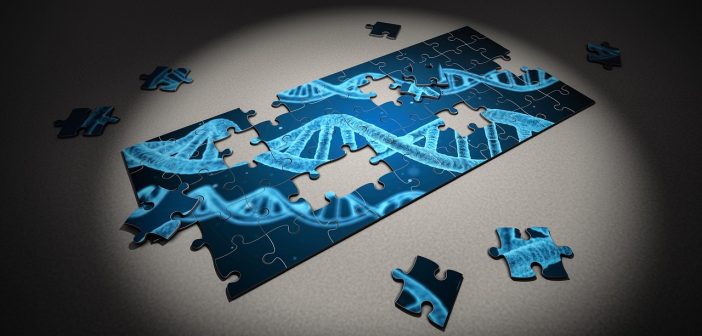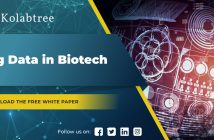Genetic engineering and biotechnology have come quite far. The words of Nobel laureate Sydney Brenner, “Progress in science depends on new techniques, new discoveries and new ideas, probably in that order”, could not be truer for gene editing. Gene editing applications span various industries, most notably food and healthcare. It refers to specific intentional alterations to the DNA sequence of a cell, tissue or organism to effect a desired change. The alterations range from a simple base pair insertion to large deletions. This pet peeve of genetic engineers- first appeared in the 1980s- relies on DNA cutting enzymes called nucleases and the cells’ own DNA repair machinery. The overall strategy remains consistent even today, but enhanced with multi-fold higher specificity and efficiency. The three gene editing strategies in vogue include zinc-finger nucleases (ZFNs), transcription activator-like effector nucleases (TALENs), and clustered regularly inter-spaced short palindromic repeats (CRISPR) along with Cas9 protein.
The advent of the CRISPR-CAS9 technology, since 2012, has rendered editing genomes much less cumbersome and more “user friendly”. But, genome editing continues to stay shrouded in an ethical conundrum.
Undoubtedly, the benefits of gene editing are best reflected on world food supplies and clinical therapies. I will discuss the impact and concerns of gene editing on each of these realms one by one in the following sections. But, before diving into the pros and cons of gene editing, it is important to understand that the current products of gene editing are different from the conventionally debated and largely opposed genetically modified organisms (GMOs). Classical GMOs carry transgenes from bacteria or viruses. Genetically edited organisms however, do not contain any components from bacteria/ virus or other species. This is possible as the nucleases used in gene editing, are not retained in the cells after the job is done.
Gene editing applications: Crops and livestock
From an agricultural point of view, the world is already facing a scarcity in food supply, which can only be expected to get worse with the changing climate and uncertain water supplies. Thus, it is important to generate crops that are more resistant to droughts, cold temperature, pests and other infectious agents. Livestock animals are integral to the agricultural practices, particularly in view of the high meat consumption globally. A primary objective while modifying livestock genes is to increase the amount of lean muscle, making them more valuable for consumption. A primary benefit of gene editing over conventional breeding strategies is its ability to change the genome of an entire generation in a single go. This saves a lot of time that will be spent otherwise to bring about the desired change in each population.
But, while doing so, it is imperative to ensure that we do not create a highly invasive species of crop that may have detrimental impact on the environment. Meanwhile it remains to be seen if gene-edited crops and livestock may find greater acceptance than the GMOs in the society.
GMOs have had a somber impression on the public. Can #geneediting be the next big thing in #agriculture? https://t.co/Dloy7cUdEj pic.twitter.com/AhHIbpnDc2
— BOSS Magazine (@BOSSNewsNetwork) April 27, 2018
Gene editing applications: Clinical therapies
Clinics are the realm where the impact of gene editing is the most direct, and thus also the most discussed and debated one for the pros and cons. Gene therapy holds the promise to correct several genetic disorders, ranging from-but not limited to- Sickle cell anemia, Huntington’s disease to Muscular dystrophy. While the majority gene editing strategies in a clinical setting use an ex-vivo approach, some diseases may not be amenable to these practices. In such cases, in vivo delivery of gene editing tools must be used. In very special cases, where prospective parents have an elevated risk of having offspring with debilitating genetic disorders, we may need to even consider germline/ embryo editing. Germline editing (editing the sexual gametes) will allow us to eliminate the diseased gene completely from the lineage, and prevent transmission to future generations. Embryo editing would also enable eliminate the diseased gene in the entire organism, including its germline. As of 2017, we are now capable of genetically editing human embryos. But, just because we can edit a human embryo, does it mean we should?
.@UMNHealth #research was the foundation for landmark #GeneEditing trial https://t.co/2U2HYbSdlG #UMNProud
— U of M Research (@UMNresearch) November 27, 2017
Ethical Debate
This is the space where the societal and ethical debate around gene editing applications needs to take place. How to decide which cases warrant germline or embryo editing? Who draws the line for ex vivo versus in vivo therapy? One may argue that gene editing should be allowed for devastating genetic ailments- like Huntington’s disease. But what about people with less life-threatening disabilities, such as dwarfism or hereditary blindness/deafness?
There is also the concern regarding people seeking to modify nonpathological human traits- genetic human enhancement for cosmetic purposes. Instead of plastic surgery, people may opt for genetic means for permanent cosmetic enhancements for themselves. One can envision a scenario in which having a less “appealing” physical feature, may cause mental distress, and may warrant a cosmetic enhancement.
So, finally, ‘to edit or to not edit’ genomes? While we have achieved the technical ability to edit genomes, scientists still need to discuss and address not just the ethics of editing, but also the safety of the organism in question and the potential impact of this gene modification on the environment. Regulatory bodies, across the globe, with strict guidelines and rules must specify which genetic diseases warrant gene editing versus not. They must also determine who gets access to this technology. Would it be only for the rich, who can afford it; or for the poor populations and tribes, where a devastating genetic disease may be more prevalent. It is imperative to ensure that these critical decisions are directed by a humanitarian perspective, rather than merely by marketing strategy dictated business.
From a technology point of view, we are on an unprecedented path of discovery and invention for improving gene editing. The only thing stopping us now is our imagination. Soon, we will be armed with a minimal to no side-effect technology for gene editing. Hence, now is the time to start talking about the ethical burden on this groundbreaking road to a better and healthier world.
——
Need to consult a genetics expert? Hire from 5000+ scientists on Kolabtree here.







